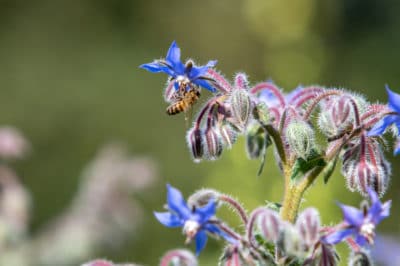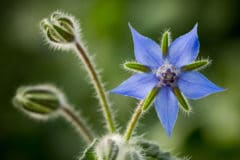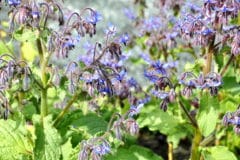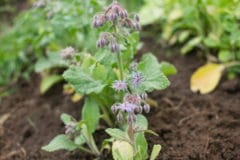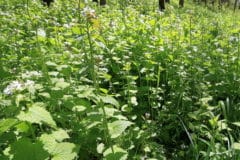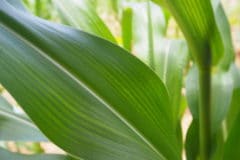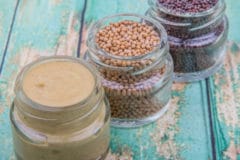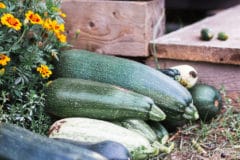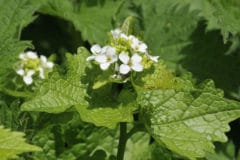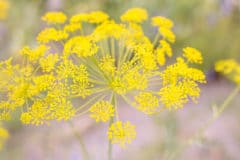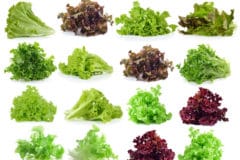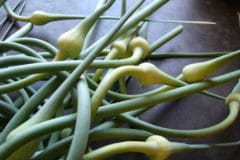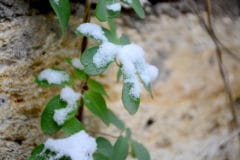Honey
Borage has been used as a pollinator attractant for centuries. It is a favorite of honey bees, solitary bees, and bumble bees alike, and it’s common to see all three perusing a bush at the same time. When planted in the garden nearby vegetables and fruits that require pollination, it will increase yields. The most notable plants that benefit from having borage as a companion include:
- Tomatoes
- Cucumbers
- Squash
- Strawberries
Borage honey is honey created from bees who foraged on mostly or entirely borage flowers. It is a light colored honey that carries many of the medicinal qualities of borage. It has a distinctive earthy smell and mild flavor that makes it a great all-purpose sweetener and tonic. Because borage is pest resistant, frost resistant, prolific, and produces large amounts of flowers it’s a perfect honeybee staple food.
Oil
Today most borage is grown commercially as an oilseed. It is a rich source of Omega-6 gamma-linolenic acid. This is used for treating everything from eczema and skin irritations to arthritis and diabetes management.
Borage oil is an anti-inflammatory, antioxidant, and natural pain remedy. It is both applied topically and taken as a supplement internally. You can often find borage oil in combination with other oils like flax or fish oil in health food and supplement stores.
Food
The leaves of borage are a well-known green. Mature leaves are cooked like chard and eaten as a stand-alone dish. Young leaves can be eaten raw in salads, wraps, and sandwiches. Borage greens can also be chopped and added to soups and sauces for their mild flavor and nutritional content.
The classic German green sauce, originating in Frankfurt, includes borage as the main ingredient along with a handful of other herbs. It’s a cold dressing used to top fried eggs and a variety of other dishes.
Beverages
Because of its cucumber-like flavor, borage is often added to teas and lemonades. The flowers are a popular additive for these recipes because they splash color and vibrancy into glasses and pitchers. Freeze borage flowers into ice cubes for later use. They also top pastries, cakes, and puddings.
Borage is a favorite herb to add to wine and spirits. This tradition dates back to ancient Greece where borage flowers were added to wine in an effort to take sadness out of the drunken state. A very complex drink called borage wine cup can be made with brandy, white wine, pink champagne, ginger ale, lemon, sugar, and chopped borage.
